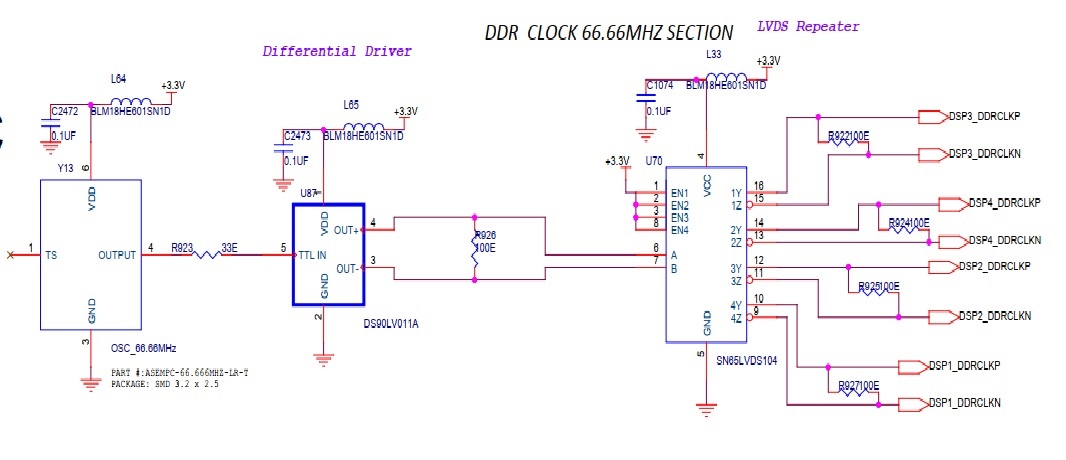Other Parts Discussed in Thread: SYSBIOS, CDCM6208
Hi,
We are using the four TMS320C6678 DSP processor in our design and trying to perform Ethernet communication between the processors through onboard ethernet switch.
Using the Helloworld project, able to send /receive the packet between the DSP's.
However, Helloworld running in one of the DSP gets crashed after a long run of about 1Hour. Tried to ping from another system, but failed.
A4=0x30 A5=0x0 C66xx_16] A6=0x1 A7=0x0 A8=0x807e7520 A9=0x0 A10=0x807f0a58 A11=0x2b A12=0x807f6508 A13=0x8004ecd4 A14=0x0 A15=0x8004ef28 A16=0x8004eca2 A17=0x0 A18=0x8004ec98 A19=0x0 A20=0x0 A21=0x0 A22=0x0 A23=0x0 A24=0x0 A25=0x1 A26=0x0 A27=0x2005020 A28=0x0 A29=0x43 A30=0x42 A31=0x1 B0=0x0 B1=0x1 B2=0x1 B3=0x80910000 B4=0x0 B5=0x90 B6=0x100 B7=0x6c B8=0x73 B9=0x3a B10=0x33 B11=0x807e7520 B12=0x33 B13=0x807b4958 B14=0x807f91d8 B15=0x8004eca0 B16=0x30 B17=0x8004ef14 B18=0x58 B19=0x3a B20=0x40 B21=0x2e5 B22=0xf B23=0x0 B24=0x0 B25=0x3000 B26=0x3000 B27=0x0 B28=0x0 B29=0x3 B30=0x2 B31=0xffffffff NTSR=0x1020d ITSR=0xf IRP=0x807e12c0 SSR=0x0 AMR=0x0 RILC=0x0 ILC=0x0 Exception at 0x80910000 EFR=0x2 NRP=0x80910000 Internal exception: IERR=0x18 Opcode exception Resource conflict exception ti.sysbios.family.c64p.Exception: line 248: E_exceptionMin: pc = 0x80910000, sp = 0x8004eca0. To see more exception detail, use ROV or set 'ti.sysbios.family.c64p.Exception.enablePrint = true;' xdc.runtime.Error.raise: terminating execution
Have checked the DDR and seems fine.
Guide me to analyse this crash dump and get to know the reason for the exception.
Gone through this https://e2e.ti.com/support/processors/f/791/t/163824?How-do-I-resolve-Internal-Resource-Conflict-Exceptions- but different from mine.
Note: The same HelloWorld running on other DSP's without any issue.






